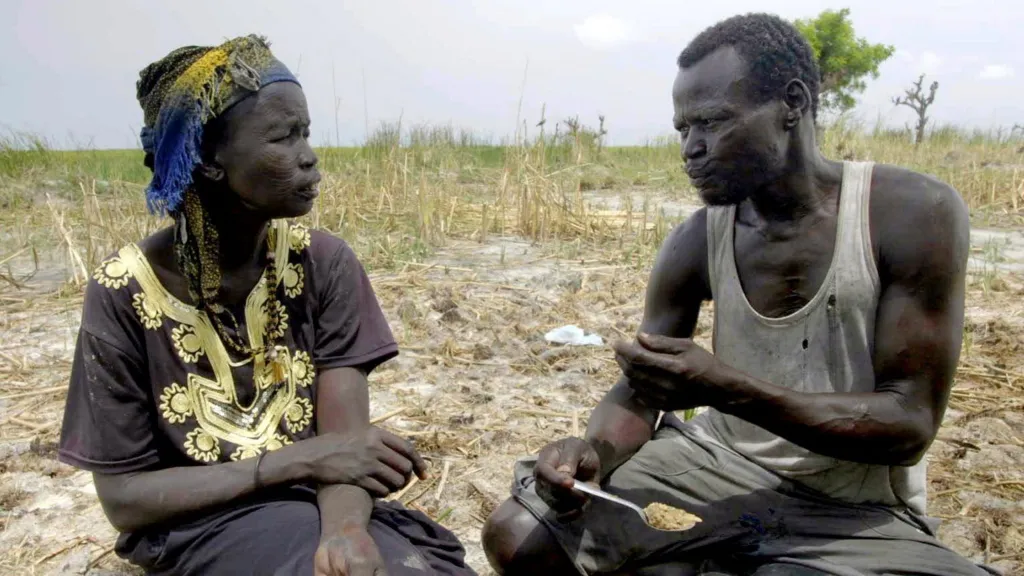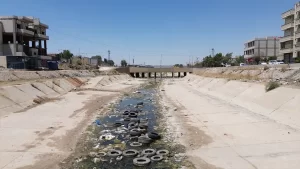Study Reveals Tripling of Extreme Drought Areas Since the 1980s
3 min read
Nyakuma and her husband Sunday, who live in a village in South Sudan, struggle to find food due to drought

Nyakuma and her husband Sunday, who live in a village in South Sudan, struggle to find food due to drought
A recent study has revealed a troubling increase in extreme drought conditions globally, with affected land areas tripling since the 1980s. According to the Lancet Countdown on Health and Climate Change, 48% of the Earth’s land surface experienced at least one month of extreme drought in 2023, a stark rise from an average of just 15% during the 1980s. Furthermore, nearly 30% of the world faced extreme drought for three months or longer this year, compared to only 5% in the 1980s.
The report underscores the accelerating pace of drought, defined as six consecutive months of very low rainfall or high evaporation rates. The implications of this trend are severe, posing risks to water and sanitation, food security, public health, energy supply, and the economy. While individual drought events are influenced by various factors, climate change is altering rainfall patterns, increasing the susceptibility of certain regions to drought.
The increase in drought conditions is particularly pronounced in areas like South America, the Middle East, and the Horn of Africa. In South America’s Amazon, for instance, drought threatens to disrupt established weather patterns by killing trees essential for raincloud formation, thereby creating a feedback loop that exacerbates drought conditions.
Interestingly, while large swathes of land are drying out, instances of extreme rainfall have also surged. Over the last decade, 61% of the world has seen increased extreme rainfall compared to a baseline from 1961-1990. The interplay between drought and flooding due to climate change complicates the situation. Hotter temperatures elevate evaporation rates from soil, intensifying dry spells, while warming oceans lead to increased moisture in the atmosphere, resulting in heavier rainfall when storms occur.
The health impacts of these climatic shifts are profound. The Lancet report indicates that drought exposed 151 million more people to food insecurity last year than in the 1990s, contributing significantly to malnutrition. Additionally, heat-related deaths among those over 65 have skyrocketed by 167% since the 1990s, while rising temperatures and increased rainfall have led to a surge in mosquito-borne diseases like dengue fever and malaria, which are now appearing in regions previously unaffected.
The frequency of dust storms has also increased, exposing millions to hazardous air pollution. Marina Romanello, executive director of the Lancet Countdown, emphasized the rapid pace of climate change, stating, “It is changing to conditions that we are not used to and that we did not design our systems to work around.”

In areas like northeast Syria and parts of Iraq, ongoing agricultural drought has made access to clean water a dire issue. In Hasakah, a city once well-supplied with water, residents now face severe shortages. The situation has deteriorated to the point where locals are digging their own wells, often resulting in contaminated water supplies that lead to illness.
In South Sudan, the statistics paint a grim picture, with 77% of the country experiencing at least one month of drought last year and half of the nation in extreme drought for six months. Meanwhile, over 700,000 people have also been affected by flooding, highlighting the dual crises of drought and excessive rainfall.
Nyakuma, a village elder in South Sudan, lamented the deteriorating conditions, stating, “When we go in the water, we get sick. And the food we eat isn’t nutritious enough.” Her family has suffered losses in livestock due to flooding, now relying on government aid and foraging for food.
The cyclical nature of drought and flooding further complicates agricultural practices. As soils become hard and dry, heavy rainfall causes runoff instead of absorption, leading to flash floods and disrupting plant growth. Romanello noted that while some plants can adapt to drought, flooding severely disrupts their physiology, threatening food security.
Unless global greenhouse gas emissions are reduced significantly, the report warns, we can expect to see more frequent droughts alongside intense rainfall. With 2023 recorded as the hottest year to date, the window for adaptation is narrowing.
“We are still in a position to adapt to climate changes, but we are approaching a tipping point,” Romanello cautioned. “The higher we allow the global temperature to rise, the worse the outcomes will be.” Without concerted action, the challenges posed by climate change will only escalate, with dire consequences for ecosystems and human populations alike.